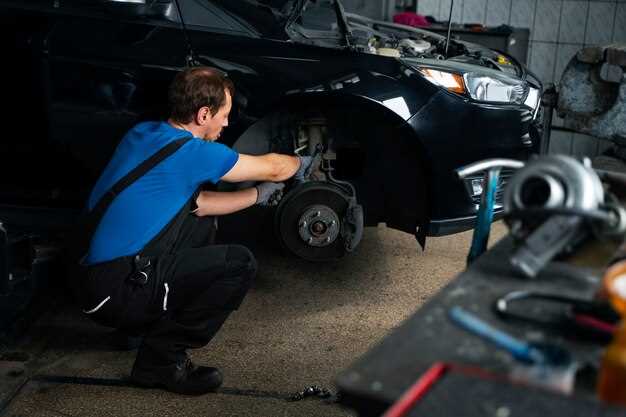
Maintaining your truck suspension is crucial for ensuring a smooth ride, enhancing vehicle stability, and prolonging the lifespan of your truck. A well-functioning suspension system not only improves handling and comfort but also contributes to the overall safety of your vehicle. Whether you use your truck for work, leisure, or off-road adventures, keeping the suspension in optimal condition should be a priority.
Regular inspections and maintenance can help identify potential issues before they develop into costly repairs. Over time, wear and tear on suspension components like shocks, struts, and bushings can lead to diminished performance. By being proactive, you can maintain the integrity of your suspension system and enjoy a better driving experience.
This article will provide practical tips for truck owners to keep their suspension in top condition. From routine checks to recommendations for upgrades, these strategies will empower you to take charge of your vehicle’s performance and ensure a comfortable and safe ride, no matter where the road takes you.
Regular Inspection of Suspension Components

Regular inspection of your truck’s suspension components is crucial for maintaining optimal performance and safety. Begin by checking the shocks and struts for any signs of leakage or damage. Look for oil stains around these components, as they can indicate a failure that affects ride quality and handling.
Next, assess the bushings, which are essential for dampening vibrations and allowing for smooth movement. Examine them for wear, cracks, or excessive play. Replace any worn bushings promptly to prevent further damage to the suspension system.
Pay attention to control arms and ball joints, which are vital for maintaining alignment and stability. Inspect them for signs of rust or wear, and ensure that they are firmly attached. Any unusual noises during turns may signal that these components need attention.
Don’t forget to check the sway bar links and other related components. A worn sway bar can lead to poor handling characteristics, especially during cornering. Inspect for any signs of corrosion or loose connections that could impair performance.
Finally, ensure that the suspension is properly aligned. Misalignment can cause uneven tire wear and affect overall handling. It’s advisable to have the alignment checked periodically, particularly after hitting bumps or potholes.
Incorporating regular inspections into your maintenance routine not only extends the life of your suspension system but also enhances the overall driving experience of your truck.
Maintaining Proper Tire Pressure and Alignment

Proper tire pressure is essential for the overall performance and safety of your truck. Under-inflated tires can lead to increased wear and tear, poor fuel efficiency, and compromised handling. Conversely, over-inflated tires can cause a harsh ride and reduced traction. To ensure optimal pressure, regularly check the tires using a reliable gauge, and maintain them according to the manufacturer’s specifications found in your owner’s manual or on the driver’s side door jamb.
In addition to tire pressure, proper alignment is crucial for the suspension system’s longevity and vehicle stability. Misalignment can result in uneven tire wear, decreased fuel efficiency, and poor steering responsiveness. Regularly inspect wheel alignment, especially after hitting rough terrain or potholes. Most mechanics recommend alignment checks at least once a year, or whenever you replace your tires.
A well-maintained suspension system relies on balanced tire pressure and correct alignment. Addressing these factors not only enhances performance but also prolongs the life of your tires and improves the overall safety of your truck on the road. Consider seeking professional help for alignment adjustments and ensure that your tire pressure is monitored before long trips or towing heavy loads.
Choosing the Right Suspension Upgrades and Replacement Parts
Selecting the correct suspension upgrades and replacement parts is vital for maintaining optimal performance and comfort in your truck. When making these choices, consider the following factors:
1. Identify Your Needs: Determine the primary purpose of your truck. Will it be used for heavy hauling, off-roading, or daily commuting? Different applications require specific suspension configurations. For example, off-road enthusiasts may seek lifts and shocks designed for rugged terrain, while those who tow often may prioritize load-bearing capacity.
2. Understand Suspension Types: Familiarize yourself with various suspension systems. Common options include leaf springs, coil springs, and air suspension. Each type has its benefits and drawbacks. Leaf springs are robust and excellent for hauling, while air suspensions offer adjustable ride heights for versatility.
3. Compatibility: Ensure that any upgrades or replacement parts are compatible with your truck’s make and model. Manufacturers often provide lists of suitable components. Mismatched parts can lead to performance issues and safety concerns.
4. Quality Over Price: Invest in high-quality components from reputable brands. Cheaper parts may save money upfront but often lead to premature wear and frequent replacements. Look for components with warranties, indicating manufacturer confidence in their durability.
5. Consult Experts: If unsure about what to choose, consult with suspension specialists or trusted mechanics. Their expertise can guide you toward the best options tailored to your truck’s requirements.
6. Installation Considerations: Evaluate whether you will perform the installation yourself or hire a professional. Some upgrades may require specialized tools or expertise, so consider your skill level before proceeding.
7. Suspension Geometry: When upgrading, pay attention to suspension geometry. Alterations can affect ride quality, handling, and tire wear. Upgrades should maintain the intended geometry to ensure stability and safety.
By carefully considering these factors, you can make informed decisions about suspension upgrades and replacements, resulting in improved performance, safety, and longevity for your truck.



